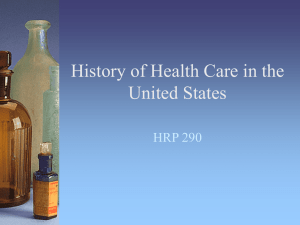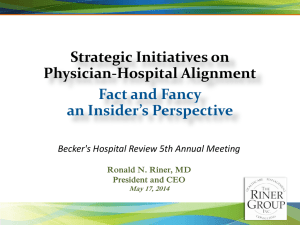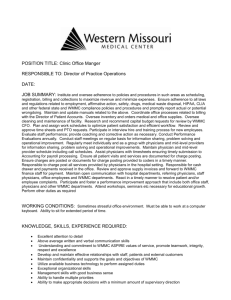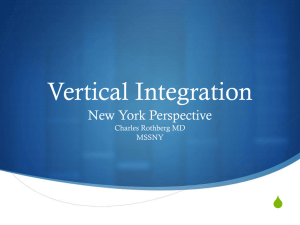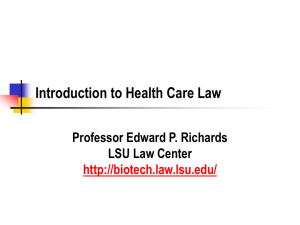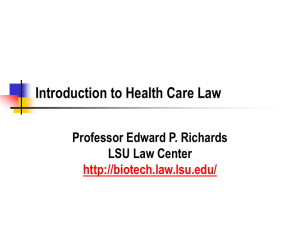Medicine in the Middle Ages 1100- 1400
advertisement
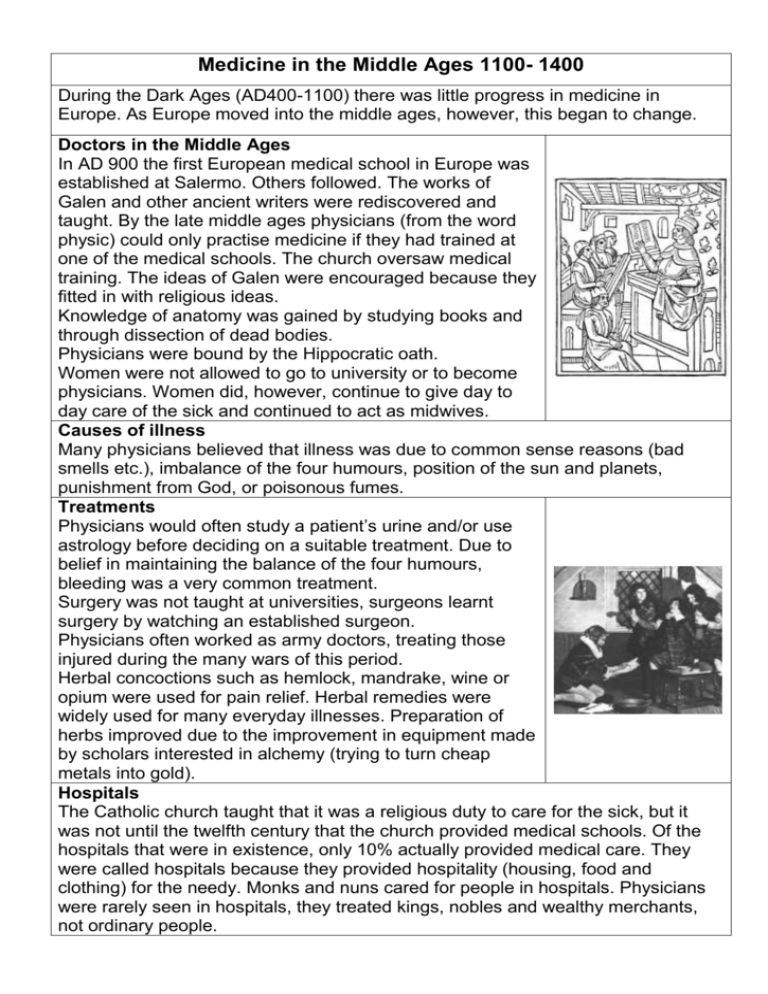
Medicine in the Middle Ages 1100- 1400 During the Dark Ages (AD400-1100) there was little progress in medicine in Europe. As Europe moved into the middle ages, however, this began to change. Doctors in the Middle Ages In AD 900 the first European medical school in Europe was established at Salermo. Others followed. The works of Galen and other ancient writers were rediscovered and taught. By the late middle ages physicians (from the word physic) could only practise medicine if they had trained at one of the medical schools. The church oversaw medical training. The ideas of Galen were encouraged because they fitted in with religious ideas. Knowledge of anatomy was gained by studying books and through dissection of dead bodies. Physicians were bound by the Hippocratic oath. Women were not allowed to go to university or to become physicians. Women did, however, continue to give day to day care of the sick and continued to act as midwives. Causes of illness Many physicians believed that illness was due to common sense reasons (bad smells etc.), imbalance of the four humours, position of the sun and planets, punishment from God, or poisonous fumes. Treatments Physicians would often study a patient’s urine and/or use astrology before deciding on a suitable treatment. Due to belief in maintaining the balance of the four humours, bleeding was a very common treatment. Surgery was not taught at universities, surgeons learnt surgery by watching an established surgeon. Physicians often worked as army doctors, treating those injured during the many wars of this period. Herbal concoctions such as hemlock, mandrake, wine or opium were used for pain relief. Herbal remedies were widely used for many everyday illnesses. Preparation of herbs improved due to the improvement in equipment made by scholars interested in alchemy (trying to turn cheap metals into gold). Hospitals The Catholic church taught that it was a religious duty to care for the sick, but it was not until the twelfth century that the church provided medical schools. Of the hospitals that were in existence, only 10% actually provided medical care. They were called hospitals because they provided hospitality (housing, food and clothing) for the needy. Monks and nuns cared for people in hospitals. Physicians were rarely seen in hospitals, they treated kings, nobles and wealthy merchants, not ordinary people.


